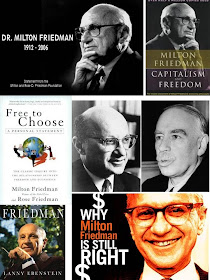There are a few Philippine-based foreigners that I
admire, especially those who are free market-leaning thinkers. Like good friend
and fellow Rotarian, Bruce Hall, based in Iloilo City; Peter Wallace, and John
Mangun.
John is an American stock market investor and analyst at
the Philippine Stock Exchange, and does business consulting, writing columns, on
the side. He has been living in this country for more than three decades now.
His kids were born here. John’s articles are archived in his website, http://www.mangunonmarkets.com/.
I am posting below three of his recent articles, about
the slow economic decline of the West and the US in particular, almost in
tandem with these economies’ piecemeal departure from free market policies and
respect for economic mobility of individuals. Five pages for these three
articles below, enjoy.
-------------
(1) The Economic
Death of the West?
Posted by John Mangun on
June 3, 2013
THERE are many reasons why for 100 years, the United
States was the global center of economic power and innovation.
The US was isolated from military invasion. The land was
rich with mineral wealth and, more important, vast farmlands capable of
producing an abundance of food and agricultural raw materials. While the
European nations all had colonies in every corner of the world providing both
natural resources and markets for their goods, the US had to rely on creating
its own wealth.
The Industrial Revolution began and was in full swing in
Europe long before the US entered its darkest period, the civil war, which tore
the country apart. But it was the US that took the advancements brought about
by the Industrial Revolution and made the country the most prosperous in
history.
The one defining characteristic of the US that separated
it from every other nation on earth was economic mobility, the freedom and
ability for virtually everyone to move up the economic ladder. The social and
economic structure of every other country severely limited a person’s
opportunity to become wealthier. The social and economic-class structure was
fixed. A peasant would always be a peasant. One who was born into a family of
shopkeepers would never become part of the ruling elite class. And by the same
token, a member of the aristocracy could never understand what starting from
the ground up would mean.
The Industrial Revolution slightly opened the door of
economic mobility but it was the very rare exception of a man who started at the
bottom and could work his way to the top of any private or public organization.
The US was the exact opposite. Each man had the chance to
excel and achieve, based on merit and effort, not the status and station into
which he was born. Of course, there were many rich families that savagely
protected their own interests; oligarchs we call them today. But the system was
designed to reward initiative and smart work.
Some of the most successful men in US history made the
move up the economic food chain. John D. Rockefeller, in his time the
wealthiest man in the world, was the son of a traveling salesman.
Rockefeller’s first job at 16 was as an assistant
bookkeeper. Railroad and shipping magnate Cornelius Vanderbilt quit school at
11 and at 16 ran a small sailboat ferry in New York City. The founder of US
Steel Corp., Andrew Carnegie, came with his family as poor immigrants from
Scotland, borrowing money to make the voyage. Henry Ford started as an
apprentice machinist and owned a small sawmill to pay the bills while he
studied engineering and bookkeeping. Wall Street icon Jesse Livermore ran away
from home at 14 because he did not want to work on the family farm. Another
stock-market name, James Fisk, ran away from home and worked at a circus.
Fourteen years later he became a stockbroker.
The US was a nation where a person could start by
cleaning tables at a fast-food restaurant with the idea that someday he/she
could own their own restaurant. That is economic mobility.


















